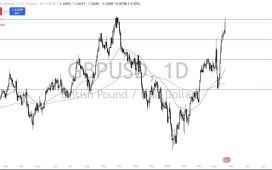
CEO and investor Jack Truong has identified several substantial economic barriers that will prevent the BRICS currency initiative from seriously challenging U.S. dollar dominance in the global financial system. Drawing on his extensive experience transforming companies like 3M, Electrolux, and James Hardie, Truong offers a clear-eyed assessment of the economic realities that will maintain the dollar’s position as the world’s primary reserve currency for the foreseeable future.
The Economic Weight of the Dollar
Jack Truong points to the overwhelming economic dominance of the U.S. dollar in global financial transactions as a fundamental barrier to any challenger. According to data cited by Truong, the U.S. dollar is involved in almost 90% of foreign exchange transactions and accounts for 85% of transactions in spot, forward, and swap markets. Half of global trade and three-fourths of Asia-Pacific trade are denominated in U.S. dollars.
These statistics demonstrate the dollar’s entrenched position in the global economy. The SWIFT system, which handles the majority of international financial transfers, primarily operates in dollars. According to Truong, “90% of the SWIFT, really the transaction across the world, it’s still done based on US dollars. And then 48% or 50% of the goods are still traded based on the US dollar, whereas only 2% of that is the Chinese renminbi.”
This massive gap in usage presents a fundamental economic barrier to any currency seeking to displace the dollar. The network effects of the dollar’s dominance — where its widespread use incentivizes further use — create a powerful economic moat that the BRICS currency initiative would struggle to overcome.
Gold Reserves Disparity
Jack Truong highlights a critical economic factor in currency stability and credibility: gold reserves. While the BRICS nations, particularly China, have been accumulating gold to potentially back their currency initiative, Truong points out that they remain far behind the United States in this crucial area.
“The U.S. central bank’s gold reserve is still more than 48% of the BRICS countries’ gold reserves combined,” according to data from Axios cited by Truong. Despite recent aggressive gold buying by China, India, and Russia, this substantial gap in reserves undermines the potential economic foundation of a BRICS alternative to the dollar.
Truong also notes an important evolution in the relationship between currencies and gold: “Because of all of this printing of the U.S. dollars during the past, several decades, and many wars that we have started since 1971, the Vietnam War, you got the Iraq War, you got all this war that we have to fund. So the government has to print the money, so our money supply and GDP now is a lot bigger than all the gold that is available.”
This evolution has implications for any currency system, including potential BRICS alternatives, he says. “So it means that unless there’s going to be a lot more gold mines that have been found, there’s not enough gold to justify, to back up all the economy, the money supply that we have existing in the world today.”
Limited Usage of BRICS Currencies
Perhaps the most significant economic barrier to a successful BRICS currency initiative is the minimal global usage of its member nations’ existing currencies. Despite China’s position as the world’s second-largest economy, its currency, the yuan (renminbi), accounts for less than 5% of global payments, compared to the U.S. dollar’s 47%.
A 2023 research paper from the Carnegie Endowment for International Peace noted: “The amount of renminbi available outside of China remains quite limited relative to the dollar, and the currency’s cross-border usage in payments is greatly eclipsed by the dollar’s role (and it could be negatively affected by a weakening Chinese economy).”
This limited international usage of the yuan, which would likely be the dominant component of any BRICS currency basket, presents a major economic obstacle to the initiative’s success. Without substantial existing usage, creating demand for a new currency becomes extremely difficult, regardless of political declarations or agreements.
Divergent Economic Structures
Jack Truong emphasizes that the diverse economic foundations of BRICS members create significant barriers to currency coordination. “Brazil focuses on agricultural and mining sectors, Russia on energy reserves, India on services and a burgeoning technology sector, and South Africa is in the process of diversifying its mining-centric economy,” he points out.
“And then there is China, a manufacturing behemoth with global infrastructure investments and domestic market woes,” Truong continues. “This intricate web of competing economic agendas will quickly entangle any currency initiative.”
These fundamental economic differences make the coordination of monetary policy extremely challenging. What benefits China’s export-driven economy might harm India’s service sector or Brazil’s agricultural exports. The economic cycles of energy-dependent Russia differ substantially from those of manufacturing-focused China or service-oriented India. These divergent economic structures and interests would make establishing and maintaining a cohesive currency policy virtually impossible.
Economic Stability and Volatility
Economic stability is a prerequisite for a trusted global currency, and Jack Truong highlights the significant disparities in this area between the United States and the BRICS nations. “America’s diverse economy, political stability, and military prowess endow the U.S. dollar with robust integrity and strength,” Truong asserts.
In contrast, BRICS countries face significant internal and external challenges that undermine economic stability. Truong identifies “economic volatility, authoritarian governance issues, and geopolitical uncertainties” as factors that impede universal acceptance and confidence in their currencies.
Economic data supports this assessment. The Russian ruble has experienced dramatic volatility in recent years due to sanctions and geopolitical tensions. The Chinese yuan faces pressures from property market challenges and economic slowdown. Brazil has historically struggled with inflation and currency stability issues. These economic vulnerabilities make it difficult for global markets to place the same level of trust in BRICS currencies as they do in the U.S. dollar.
Infrastructure and Transaction Costs
The economic efficiency of dollar-based transactions represents another barrier to BRICS currency adoption. Decades of infrastructure development have created highly efficient systems for dollar-denominated trade and finance. Shifting to an alternative currency would impose significant transition costs on businesses and financial institutions worldwide.
Truong points out that creating the infrastructure necessary for a new global currency would require enormous investment and coordination — further complicated by the lack of consensus among BRICS members. Without this infrastructure, transaction costs for a BRICS currency would likely be higher than for dollar-based alternatives, creating an economic disincentive for adoption.
Economic Policy Independence
Another economic challenge identified by Jack Truong is the desire of BRICS nations to maintain independent economic and monetary policies. Unlike the Eurozone, where member nations surrender monetary policy control to the European Central Bank, BRICS members would be reluctant to cede such sovereignty.
“If you have one currency, you have to have all the countries agree on what is the relative exchange rate between those two. And then you convert to that, but can you imagine trying to get [Vladimir] Putin and Xi [Jinping] and [Narendra] Modi all sitting in the same room and agreeing on one direction? Good luck!” Truong observes.




